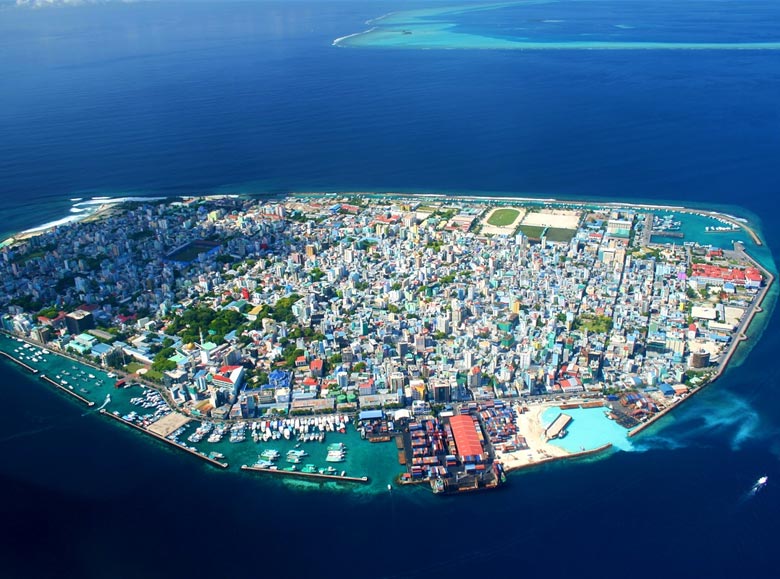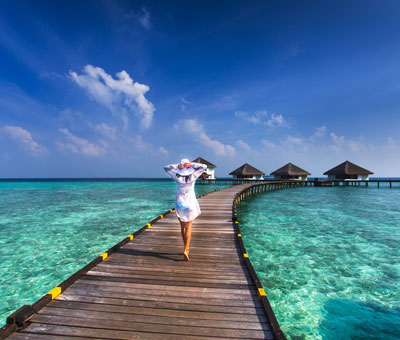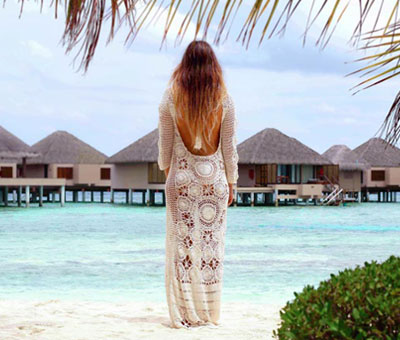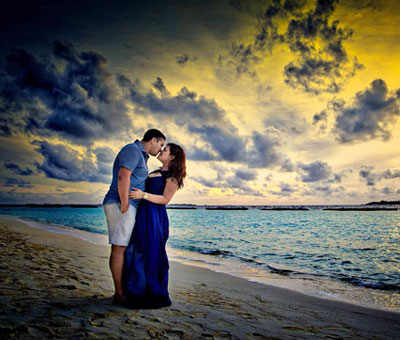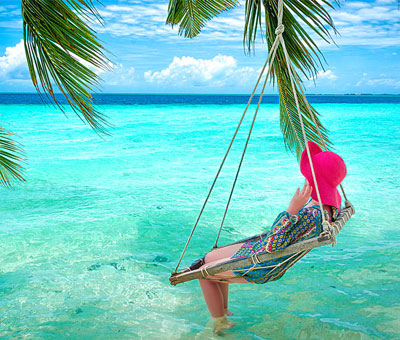Although tiny, Male, the capital of Maldives, has been the political, economic and cultural hub of this far -flung, archipelago for centuries. Since the arrival of Islam in the twelfth century, it has been known as the “Island of the Sultans”.
Set in the middle of the Male Atoll, Male covers just 1.8 square kilometers (more than half a square mile). Fifty years ago it was a sleepy village lost in the limbo of the Indian Ocean. Today Male, the capital of a nation caught up in a race to join the rest of the world, contains the greatest wealth in the country and is the administrative and religious centre of the islands.
Maldives Tour Packages
Pricing and Itinerary
Earlier this century, with its clean rectangular streets of coral sand and its one storey coral buildings behind neat palisades, visitors were struck by its peace and charm. Englishwoman Lawson Robins visited the capital in 1920 — one of the few while women to do so — and noted that there was no telegraph, no ox carts, no motor cars and no carriages. It was “a land of quietness and peace. . . . Some of the best houses have walls of whitewashed coral stones; but most are in a tiny compound surrounded by a fence of cadjan. Trees and shrubs flourish: we saw firs, oleanders, bamboos, palms and other plants. . . . Each street was carpeted with white coral sand, soft and clean.”
When the English traveller ‘T W Hockly visited Male in 1934 he, too, recorded: “The roads are all of white coral sand and I have never seen any place kept cleaner. There were several small shops and a few houses where plantain, papaya and mango trees, and many shrubs were flourishing luxuriously.
“The poorer inhabitants have their houses walled with mats or cadjims made from palm leaves, about six to seven feel iii height. Every little dwelling stands in its own compound. They are roofed with cad jails or corrugated iron sheets.”
When H C P Bell stayed on Male in 1921, he remarked that “with its teeming copulation of over 5,200 souls, it is far too overcrowded already”. Yet the capital now boasts 70,000 inhabitants — nearly a third of the population — and a floating population of several thousand people who come to sell their wares and buy goods.
Male has changed irrevocably. To cope with the swelling numbers, land was reclaimed from the shallows to the south and west, and the island is now one-third larger.
Building blocks and cement bricks have replaced the cadjan, and the sand in the streets is now grey. Paved roads crisscross the shopping centre and many trees have vanished, felled when President Muhammad Amin Didi ordered wider main roads.
Indeed, so large is the population and so scarce is land that the traditional single-storey coral houses are being replaced by taller, modern buildings, some even of eight storeys. In every quarter of the island there are signs of hectic building and changing pace as new money and new people sweep away the soporific past.
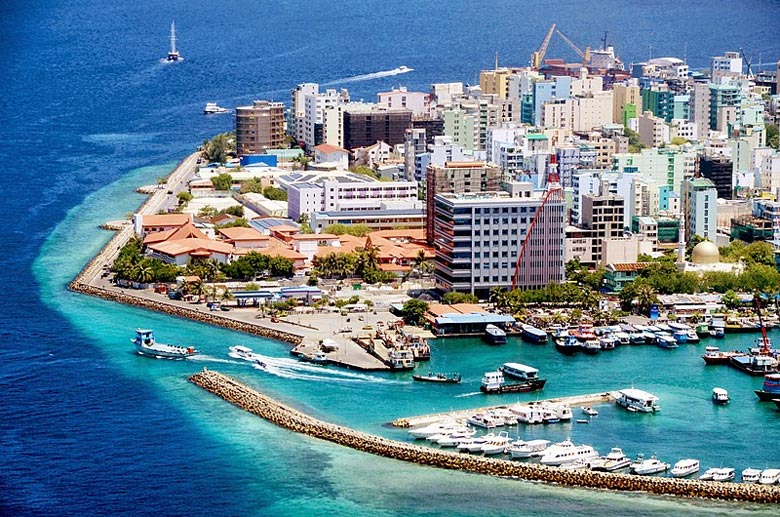
Male
Although Male has no factories or sky-scrapers, it is home to all government offices, banks, communications and the key in-situations which control the nation’s economic and social life.
Islanders from all over the archipelago do business in Male’s waterfront offices, the “Singapore Bazaar” and the small shops in the narrow lanes where most goods are imported. If the atolls depend on the sea for their livelihood, ultimately Male depends on the atolls for its economic well-being.
The modern infrastructure of the nation was only laid down in the late 1970s. The first commercial jet landed in 1977 at the only operating airport on neighboring Hulhule Island. In the same year a satellite earth station on Male made international telecommunications possible. The following year, colour television was introduced to Male and, since then, each year brings newer technology.
Travel information on Male
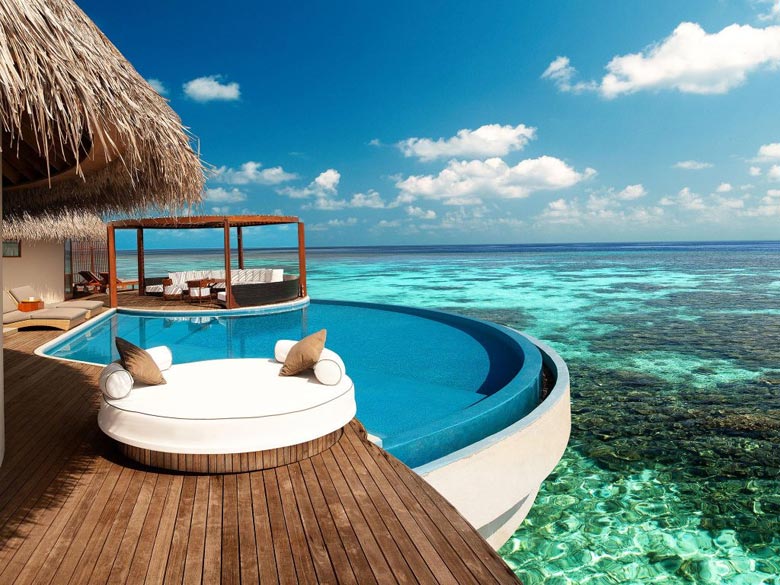
Travel to Male
Male, provides everything from special medical attention to the main secondary government and private schools in the country. To progress in Maldivian society you have to start in the capital. Indeed, the political history of Maldives is largely the history of Male’s major families.
Like many developing capitals, Male draws the young. Education in the outlying atolls is still based on traditional private schools, makthab, where pupils learn the rudiments of the Qur’an and Dhivehi. Most English-medium secondary school and further education institutes are in Male GCE 0-level graduates from such schools remain in the capital, as they have to serve the government for between two and three years. A-level graduates serve three years when called upon. Even after they have honoured this bond few wish to return to the atolls. Jobs are easier to find in Male and life is more exciting. Male has only two cinemas due to the rising popularity of home videos, and there are nightly trans-missions on local television.
Getting there
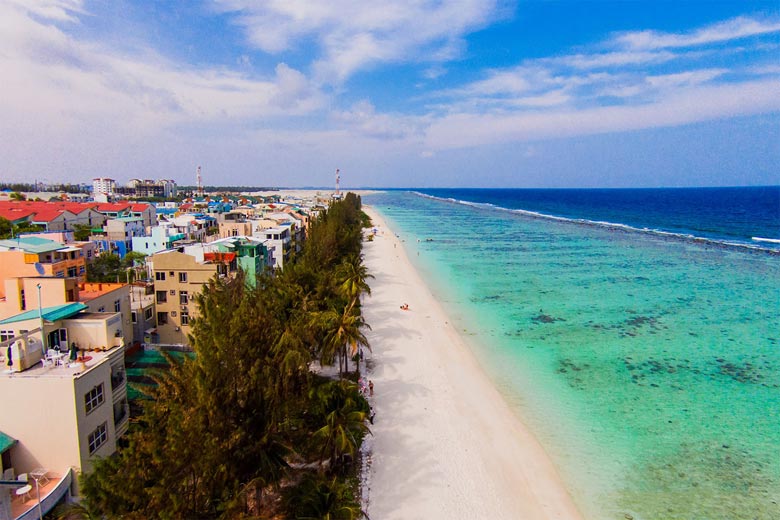
How to Getting in Male Maldives
Male is so small that there is no room for an airport. Airliners land on neighboring Hulhule Island, which for years served as the holiday retreat for the sultans who lived in Male. This long, thin stretch of land, providentially near the capital, serves as a natural aircraft carrier permanently anchored in the sea, with the only rum.) In the world that begins and ends in water. Just as your wide-body jet seems about to splash into the sea, the wheels suddenly bounce onto the asphalt.
Now one form of transport is abandoned for another. Alongside the airport, dhoanis and launches wait at the jetty to take passengers to the capital and surrounding resort islands.
Where to stay in Male
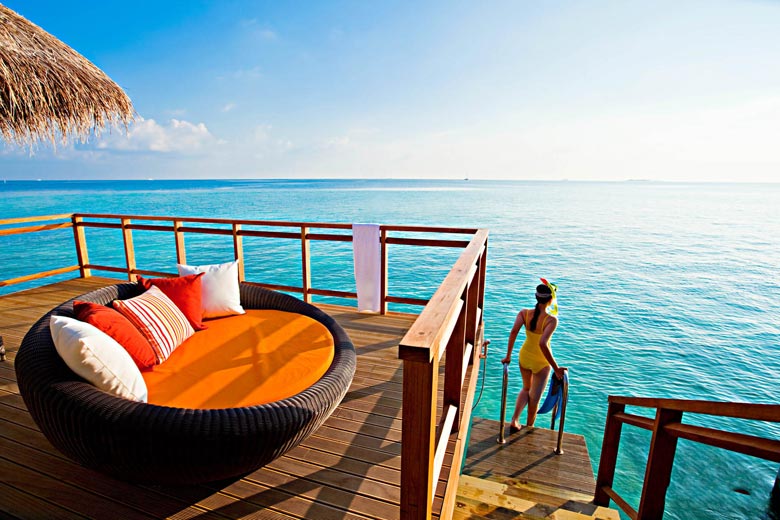
Where to stay in Male
There are a few reasonably priced private and government-run guesthouses and small hotels in the capital.
Nasandhura Palace Hotel fully refurbished in 2005 otters superb quality services at affordable prices. It has 31 spaciously air-conditioned rooms with harbour views and all the modern amenities, 24 hours coffee shop, banqueting, conference and outside catering facilities.
The Ram Hotel has thirty-one rooms. A once government guest house called the Sosunge is now the Hotel and Catering School.
Hilaaleege, a government-owned guest-house, probably warrants one star by international standards, but it has its own quiet and pleasant atmosphere with friendly service. However, it only accommodates official guests.
There is also a wide range of privately owned and registered guesthouses scattered across the island .Most of the travellers opting for Maldives tour packages opt for hotels and luxury resorts in the nearby islands .
Getting Around Male
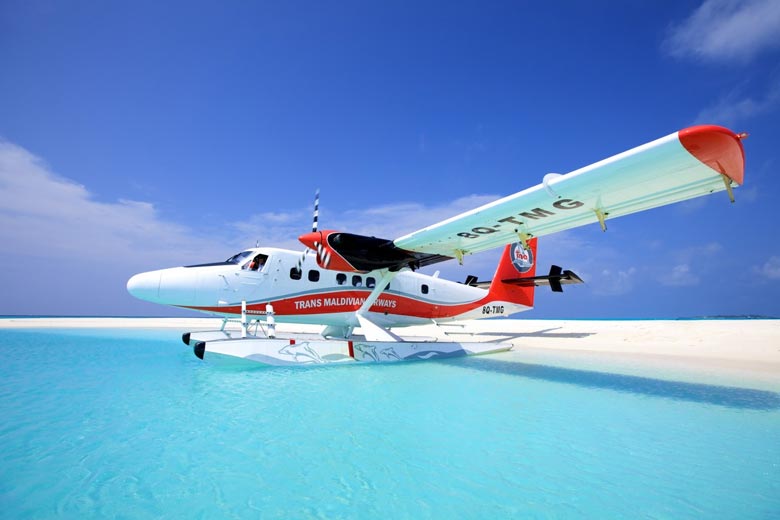
Getting Around Male Maldives
The best way to discover Male is by foot. Although it only takes about twenty minutes to walk the length of the island, many citizens ride about on bicycles. Row upon row of solid Raleigh bicycles outside government offices show how the pace of life is quickening. There are no buses, but several taxi services. All charge a standard Rf 10/- per trip anywhere in Male without luggage, with an additional charge of Rf 5/-for luggage. All operate 24 hours and can be called by telephone.
Sightseeing in Male
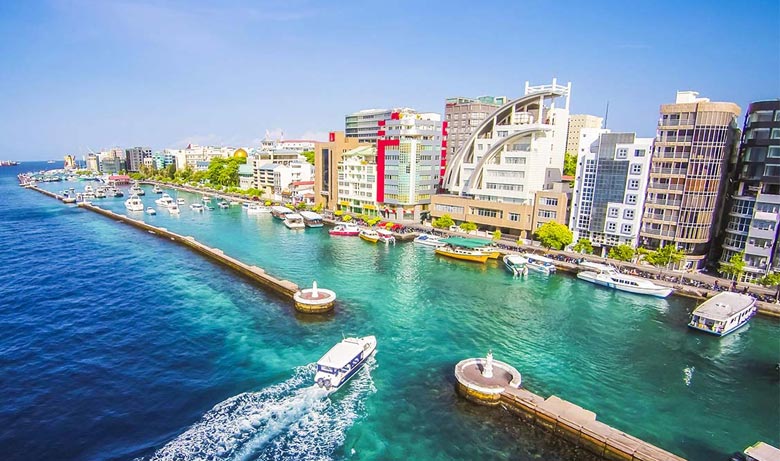
Sightseeing in Male Maldives
The lifeblood of the nation, great liners, tankers and cargo ships which bring all the islands need for building, food and power, ride high at their moorings in the roadstead as you cross the channel from the airport to Male.
This expanse of ocean between the islands of Funadhoo, Dhoonidhoo, and Viligili is the outer harbour where dhoanis buzz around the silent, brooding beasts of the high seas like insects. The cargoes are ferried by towed lighters to the wharfs of the inner harbour north of the capital.
Enclosed by a coral stone breakwater with narrow entrances, it was built between 1620 and 1648. Various sections of the waterfront have different functions: one for the ferry boats and dhoanis to the outlying islands, another for fishing boats and local cargo. In front of the Headquarters of the Security Forces is a new wooden official jetty.
Male is divided into four districts. Henveiru occupies the north-east side and Maafannu the north-west. The two smaller Wards, Galoihu and Machchangolhi, lie in the centre and to the south.
Most houses have Dhivehi names, but some reflect the British influence — often quite incongruously and sometimes poetically: Snow Down, Sky Villa, Rose Burn, Night Flower, Blue Bell, Lightning Villa, Dreamy Light and Crab Tree. Green and blue are favorite colors and windows tend to be high and narrow which, according to legend, prevents evil spirits from entering.
Tribute to Islam
Dominating the Male skyline from the sea is the shining gold dome and thin minaret of the new and striking Islamic Centre. Located between Medhuziyaaraiy Magu and Ameer Ahmed Magu, it was opened in 1984 and contains a library and conference hall. Its central feature, the grand mosque, holds more than 5,000 people. The main prayer hall has wood carvings and Arabic verses inscribed by Maldivian craftsmen.
Named after the national hero, Sultan Muhammad Thakurufaanu, who ousted the Portuguese in the seventeenth century, the Islamic Centre not only honours the Muslim faith but reflects the new prosperity that is enveloping the islands. There are several other Islamic monuments on Male. Opposite the old Friday Mosque sits the early Medhuziyaaraiy memorial, which commemorates the person who converted Maldives to Islam in AD 1153 — one Al-Sheikh Abu al-Barakat Yusuf al-Barbari, also referred to as Al-Sheikh Abdul Rikaab Yusuf al-Thabreyzee.
Nearby is the most beautiful mosque on Male — the Hukuru Miskiy or Friday Mosque — built in 1656 during the reign of Sultan Ibrahim Iskandar. The interior and exterior walls are intricately carved with Arabic verses and ornamental patterns. The compound encloses the ancient tomb-stones, all beautifully carved, of many past sultans and dignitaries.
In 1675 the same sultan, inspired by the minarets he had seen on a pilgrimage to Mecca, built the nearby Munnaaru Minaret, where the chief mudhimu, or muezzin, on the island called the faithful to prayer before the Islamic Centre was built. The most remembered episode in Maldives’ past is commemorated by the
Bihuroazu Kamanaa Miskiy, the tomb of Muhammad Thakurufaanu, who in 1573 was instrumental in regaining the country’s independence from the Portuguese. That day, the first of the Islamic month of the Rabeeu’l Awwal, is celebrated as Maldives’ National Day. Thakurufaanu, who died in 1585, is also remembered for minting the country’s first coins, improving education and religious services, and expanding trade.
Sultan Ali VI is remembered in the Ali Rasgefaanu Ziyaaraiy memorial. Popularly known as Ali Rasgefaanu, he ruled the country only two-and-a-half months before he was killed in the Portuguese invasion of 1558. The memorial is on the spot where the sultan fell after being hit by an enemy arrow. He was standing in the shallows, but land reclamation has brought the memorial inland.
Successive rulers used the inspiration of Sultan Ali and Muhammad Thakurufaanu as national heroes to weld the scattered people of Maldives into one nation.
Historic Buildings
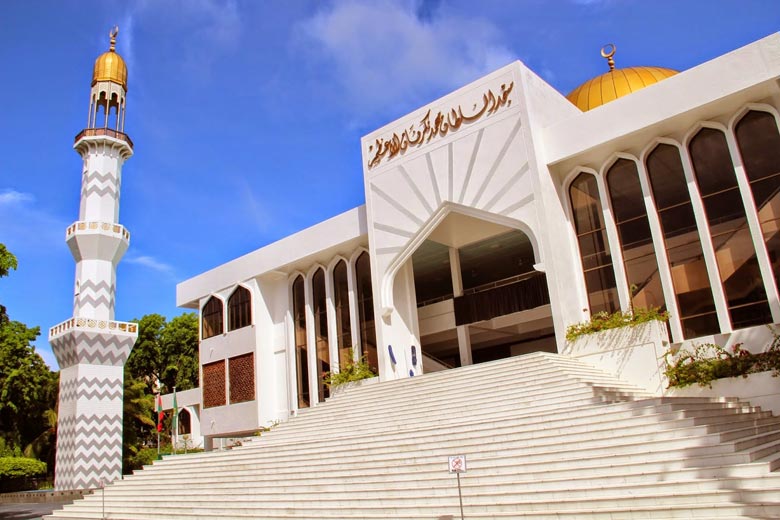
Historic Buildings in Male
Other buildings in Male speak of the tempestuous political history which threatened to split the islands as different factions fought for the sultanate. Sultan Shamsuddin III built the Presidential Palace, known as the Muleeaage, for his son just before the First World War. But the sultan was deposed and his son never took office. When the country became a republic in 1953 the colonial-style building was designated the Presidential Palace.
However, the Sultan’s Palace was razed to the ground — except for one three-storey wing. The gardens became a public park and now only the massive Iron Gate at the entrance, opposite the Islamic Centre on Medhuziyaaraiy Magu, speaks of its former glory. The Sultan’s Park forms a quiet green oasis in the now bustling capital, with ponds covered by water lilies and leafy trees filled with bird song.
The wing that survived is today the National Museum, housing a complete collection of royal possessions. Its most interesting exhibits, however, are archaeological finds. Spread out against an outside wall and in a small room are the intriguing remains gathered from temples scattered throughout the atolls: Buddha heads, Bohomala sculptures, monkey statues and a broken statue piece of the Hindu water god, Makara.
The most fascinating pieces are two five-faced statues with long feline teeth, outstretched tongues and extended ear lobes discovered recently in Male.
Most objects in the museum belonged to former sultans: thrones, sedan chairs, ceremonial parasols, palanquins and a fine collection of boxes decorated with intricate lacquer work.
Shops and markets
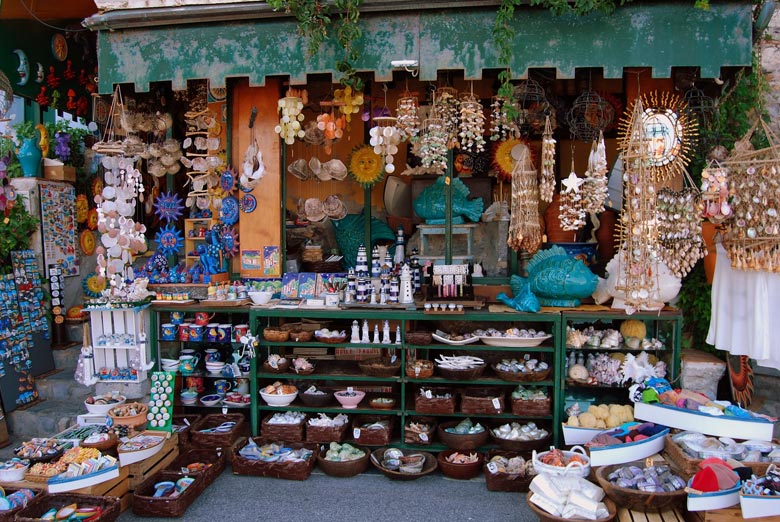
Shops and markets in Male
The main shopping area, a cluster of stores along and around the bottom end of Chandhani Magu (the main north-south street), is nicknamed the Singapore Bazaar because the majority of goods are imported from Singapore.
Apart from the tourist shops, other shops deal in spices, dried fish, rope and other essential items. There are more tourist shops along the waterfront — the Boduthakurufaanu Magu.
North of the town centre along the waterfront stand the markets. From mid-afternoon fishing dhoartis begin to sail into the harbour laden with the day’s catch and the crews, under the remorseless tropical sun since dawn, carry the catch — mainly bonito, swordfish and tuna — ashore.
The fish market, where they are laid out in the shade, is strictly men’s business. Each head of the household chooses the family fish. Only a few women on Male have ever witnessed this daily ritual, which takes place near sundown. Indeed, a few women are so housebound that they have never seen the whole of their island home.
Men also shop in the neighboring wood market for firewood — coconut and screw pine as well as dhakadhaa, uni and dhiggaa — brought in by dlwani from the surrounding islands. The only trees left on Male are ornamental coconuts, although some new saplings have taken root on reclaimed land in the west.
Nearby a covered market displays the staples of Maldivian life — rice, coconuts, eggs, oil, spices, sweet potatoes, onions, chillies, watermelons, mangoes, bananas, papayas, pomegranates, limes and non-alcoholic toddy made from coconut sap. Because there is so little fertile land, vegetables are rare and expensive. Back at home the food enters the inner sanctum of the women — the kitchen – where traditionally no man sets foot.
Entertainment
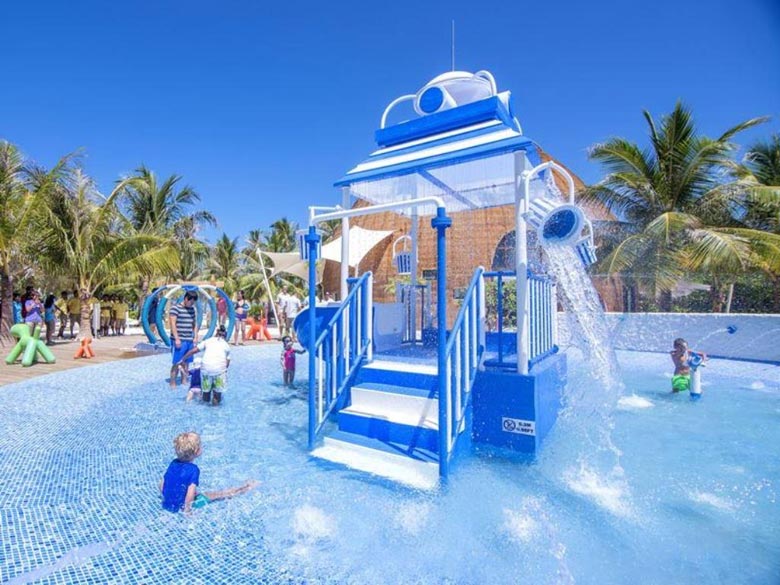
Entertainment in Male
Male offers little in terms of organized entertainment. There are no nightclubs or bars. But an evening strolls around the centre of town along Majeedhee Magu, alive with shoppers, music and noise, helps to absorb Male’s unique atmosphere.
And there are restaurants, both European and Maldivian, and cinemas which screen mainly Hindi romances and adventures.
The television station transmits a mixture of national and foreign programmers and the Voice of Maldives radio station is on the air throughout the day.
If the sleepy pace, beautiful faces and marvelous seascapes begin to pall, you can make an excursion to a nearby resort island or hire a dhoani to find out how most islanders live and travel.
Traditionally, Maldivians are shy with strangers. With their red faces, short shorts, colorful shirts and inevitable cameras, the tourists on Male’s waterfront stand out. But Maldivians are rapidly adapting. To entice tourists, Western pop music blares out of the shops and flashy trinkets are on display.
Eating establishments
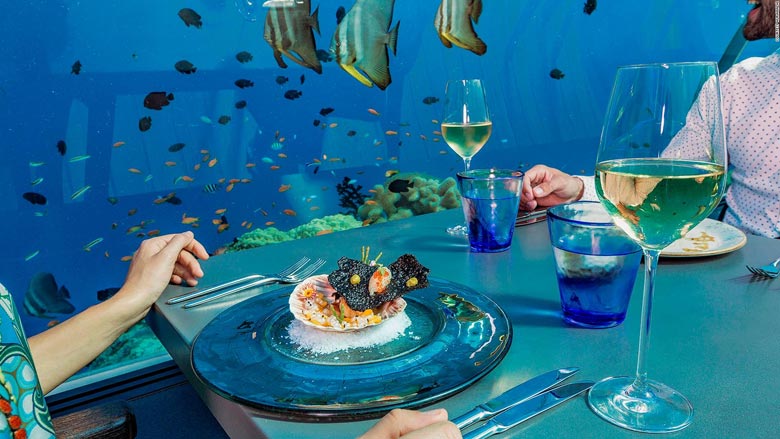
Eating in Male
In almost every street or alleyway you will find a tea-shop offering piping hot tea, sai, and delicious snacks known as “short-eats”. Maldivian women never enter the tea-shops and women visitors will find themselves objects of curiosity.
A dollar or two is enough for a small feast of rice, curry and several side dishes. You take as much as you want from the dishes, which are constantly replenished, then pay at the door.
Almost any time of the day short-eats and vegetable and fish curries are available at the Evening Glory and The Crest in Henveiru and at the Majeedhee Ufaa near the Chandhani-Majeedhee junction. Close to the harbour are the aptly named Dawn Cafe and Queen of the Night.
Other restaurants cater for European tastes and pockets, such as Quench and the New Port, a good waterfront restaurant.
A new café, Shanghai Restaurant, has been opened on Randhebai Magu. The Gelatino Italiano specializes in ice cream.
The only Indian restaurant, On Majeedhee Magu, is called — surprise, surprise — Indian Restaurant, although the Park View on Chandhani Magu features some Indian cuisine, along with continental and Chinese, on its menu. Other restaurants of note include the Dragon on Marine Drive — which specializes in Thai cuisine — and. Twin Peaks on Orchid Magu.
For more information on Travel to Maldives, contact Swan Tours, One of the leading travel agents in India.
